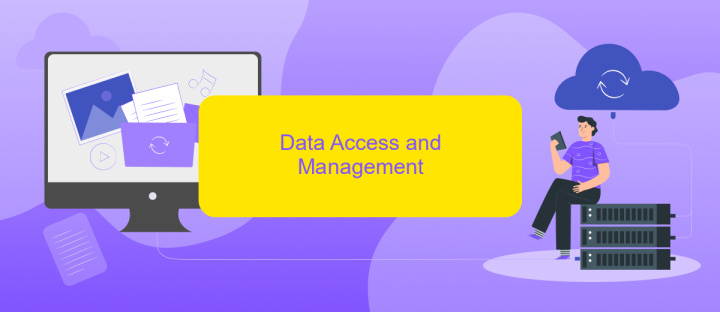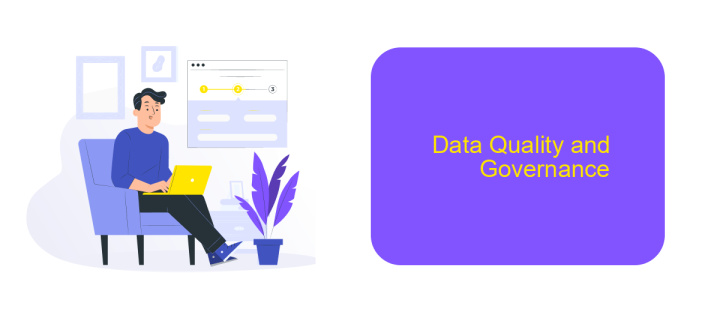Customer Data Integration Architecture
In today's data-driven world, businesses require seamless integration of customer data to deliver personalized experiences and drive growth. Customer Data Integration Architecture provides a robust framework for consolidating diverse data sources, ensuring data consistency, and enabling real-time insights. This article explores the key components, benefits, and best practices for implementing an effective customer data integration strategy.
Architectural Overview
Customer Data Integration Architecture is a critical aspect of modern businesses, enabling seamless data flow and unified customer insights. This architecture typically involves multiple layers, including data collection, storage, processing, and integration, ensuring data consistency and accessibility across various platforms.
- Data Collection: Gathering customer data from multiple sources like websites, mobile apps, and CRM systems.
- Data Storage: Centralized databases or data lakes to store collected data securely.
- Data Processing: Transforming raw data into meaningful insights using ETL (Extract, Transform, Load) processes.
- Data Integration: Combining data from different sources to create a unified view of the customer.
Tools like ApiX-Drive play a crucial role in the integration layer by automating the data transfer between various applications and services. ApiX-Drive facilitates real-time data synchronization, reducing manual efforts and ensuring data accuracy. By leveraging such tools, businesses can achieve a cohesive Customer Data Integration Architecture, driving better decision-making and enhancing customer experiences.
Data Integration Patterns

Data integration patterns are essential for effectively consolidating customer data from various sources into a unified system. One common pattern is ETL (Extract, Transform, Load), which involves extracting data from different sources, transforming it to fit the target system's requirements, and loading it into the final database. Another popular pattern is the use of APIs to enable real-time data synchronization between systems. This approach ensures that customer data is always up-to-date and accessible across multiple platforms.
To streamline the integration process, services like ApiX-Drive can be utilized. ApiX-Drive offers a user-friendly interface for setting up and managing integrations without requiring extensive coding knowledge. It supports a wide range of applications and automates data transfer, reducing the manual effort involved in maintaining data consistency. By leveraging such tools, businesses can ensure seamless data flow and improve the accuracy and reliability of their customer data integration efforts.
Data Access and Management

Effective data access and management are crucial for a robust Customer Data Integration Architecture. Properly managed data ensures that all customer information is accurate, up-to-date, and easily accessible to authorized personnel. This not only enhances decision-making but also improves customer experience by providing timely and relevant information.
- Implement a centralized data repository to store all customer data in a unified format.
- Utilize data integration tools like ApiX-Drive to automate data synchronization across various platforms and services.
- Ensure data security by implementing encryption, access controls, and regular audits.
- Establish data governance policies to maintain data quality and compliance with regulations.
- Regularly update and maintain data integration pipelines to adapt to changing business needs.
By following these steps, organizations can streamline their data access and management processes. Tools like ApiX-Drive play a pivotal role in simplifying data integration, allowing businesses to focus on deriving actionable insights from their customer data. This ultimately leads to more informed business strategies and improved customer satisfaction.
Data Quality and Governance

Ensuring high data quality and robust governance is crucial for effective Customer Data Integration Architecture. Poor data quality can lead to inaccurate insights and flawed decision-making, while strong governance ensures compliance and data security.
To achieve this, organizations must adopt comprehensive data quality management practices. These practices include data profiling, cleansing, and validation to maintain accuracy and consistency across integrated systems.
- Data Profiling: Assessing data for accuracy, completeness, and consistency.
- Data Cleansing: Correcting errors and removing duplicates.
- Data Validation: Ensuring data meets predefined standards and rules.
Additionally, leveraging integration services like ApiX-Drive can streamline the data integration process. ApiX-Drive offers automated workflows and seamless connectivity between various data sources, ensuring data is consistently accurate and up-to-date. By implementing these strategies, organizations can enhance their data quality and governance, leading to more reliable business outcomes.
- Automate the work of an online store or landing
- Empower through integration
- Don't spend money on programmers and integrators
- Save time by automating routine tasks
Implementation Considerations
When implementing a Customer Data Integration (CDI) architecture, it is crucial to consider the scalability and flexibility of the system. Ensure that the architecture can handle increasing volumes of data as your customer base grows. Opt for modular components that can be easily updated or replaced without disrupting the entire system. Additionally, prioritize data security and compliance with regulations such as GDPR and CCPA to protect customer information and maintain trust.
Another key consideration is the integration of various data sources and tools. Utilizing services like ApiX-Drive can streamline this process by providing seamless connections between different platforms and databases. ApiX-Drive offers automated workflows and real-time data synchronization, which can significantly reduce manual effort and errors. By leveraging such integration services, you can ensure that your CDI architecture remains efficient, reliable, and capable of meeting the evolving needs of your business.
FAQ
What is Customer Data Integration (CDI) Architecture?
Why is CDI Architecture important for businesses?
What are the key components of a CDI Architecture?
How can businesses automate and streamline the integration of customer data?
What are the common challenges in implementing CDI Architecture?
Strive to take your business to the next level, achieve your goals faster and more efficiently? Apix-Drive is your reliable assistant for these tasks. An online service and application connector will help you automate key business processes and get rid of the routine. You and your employees will free up time for important core tasks. Try Apix-Drive features for free to see the effectiveness of the online connector for yourself.


